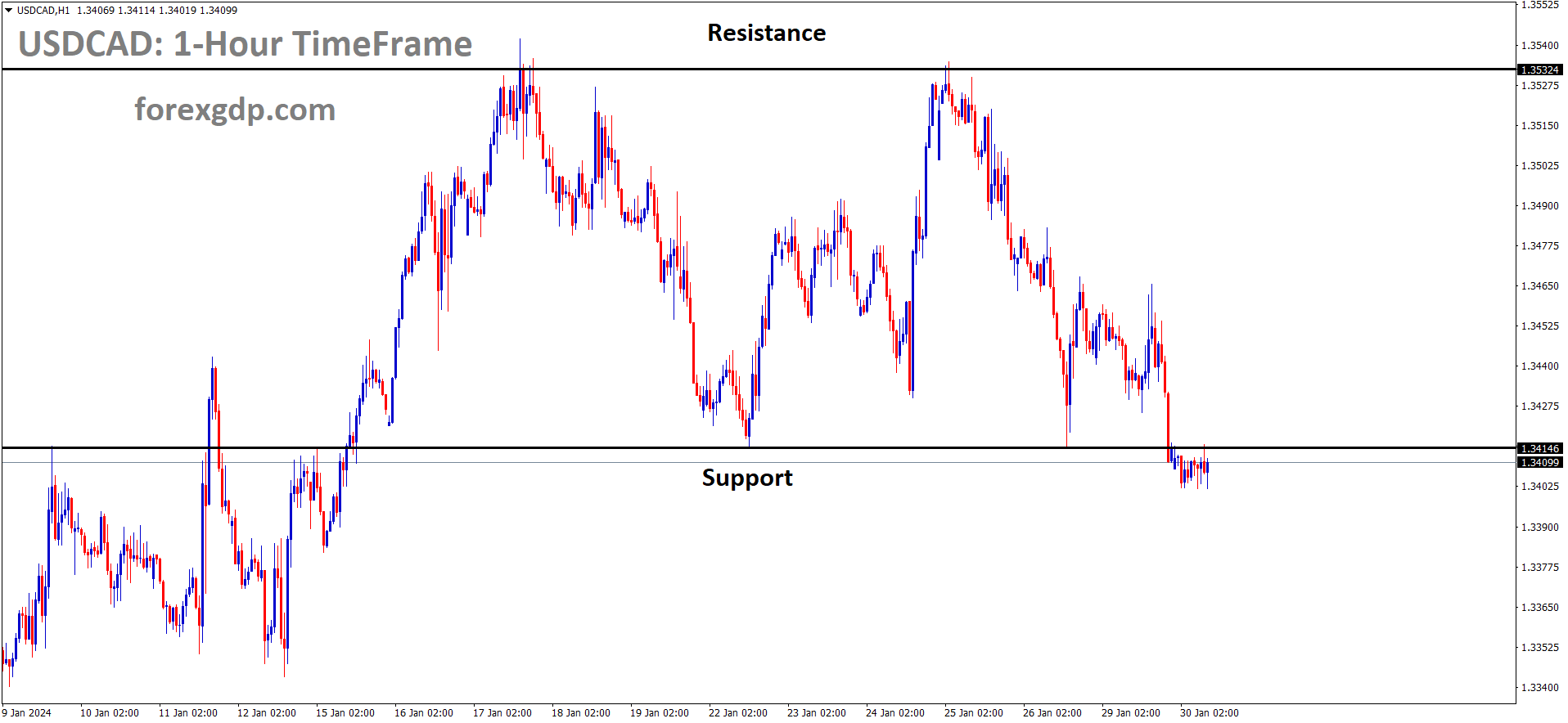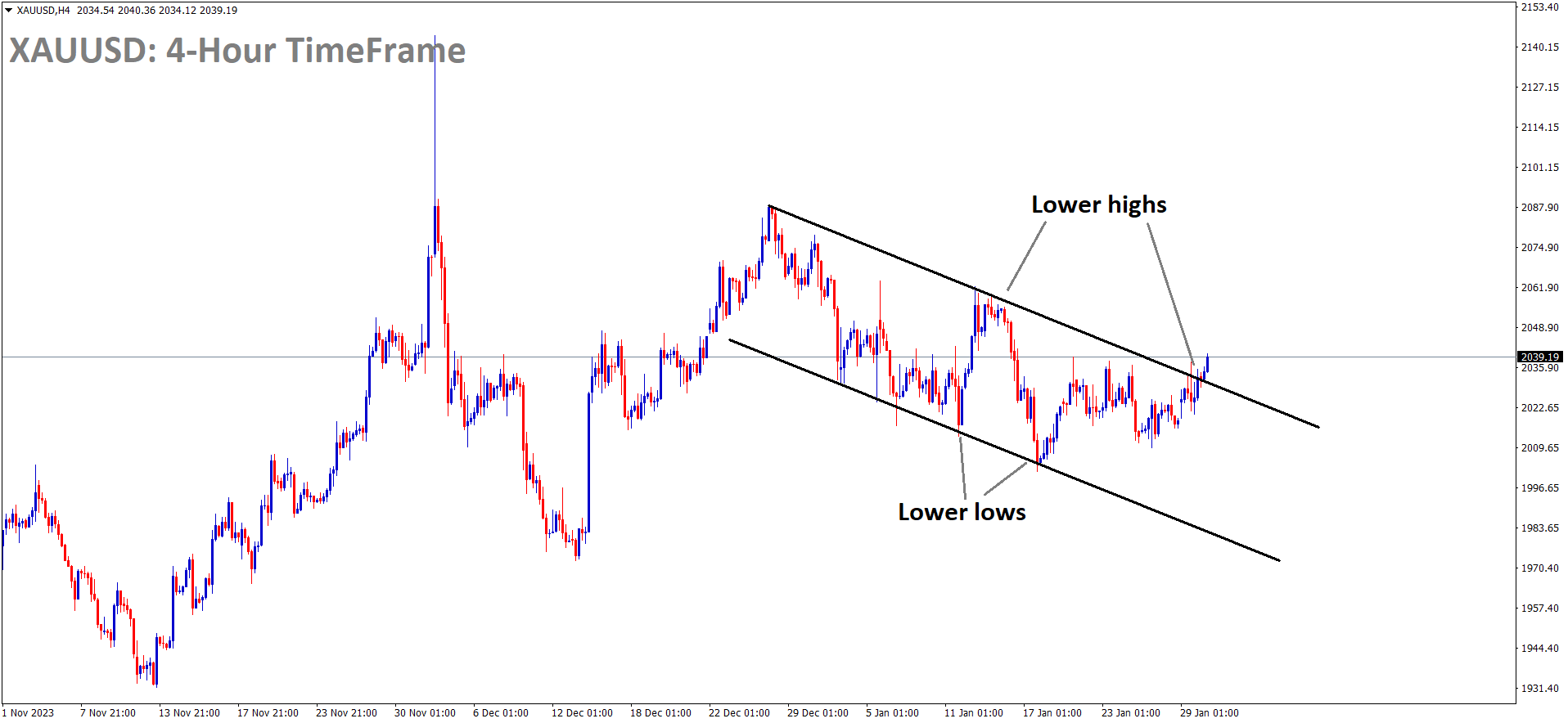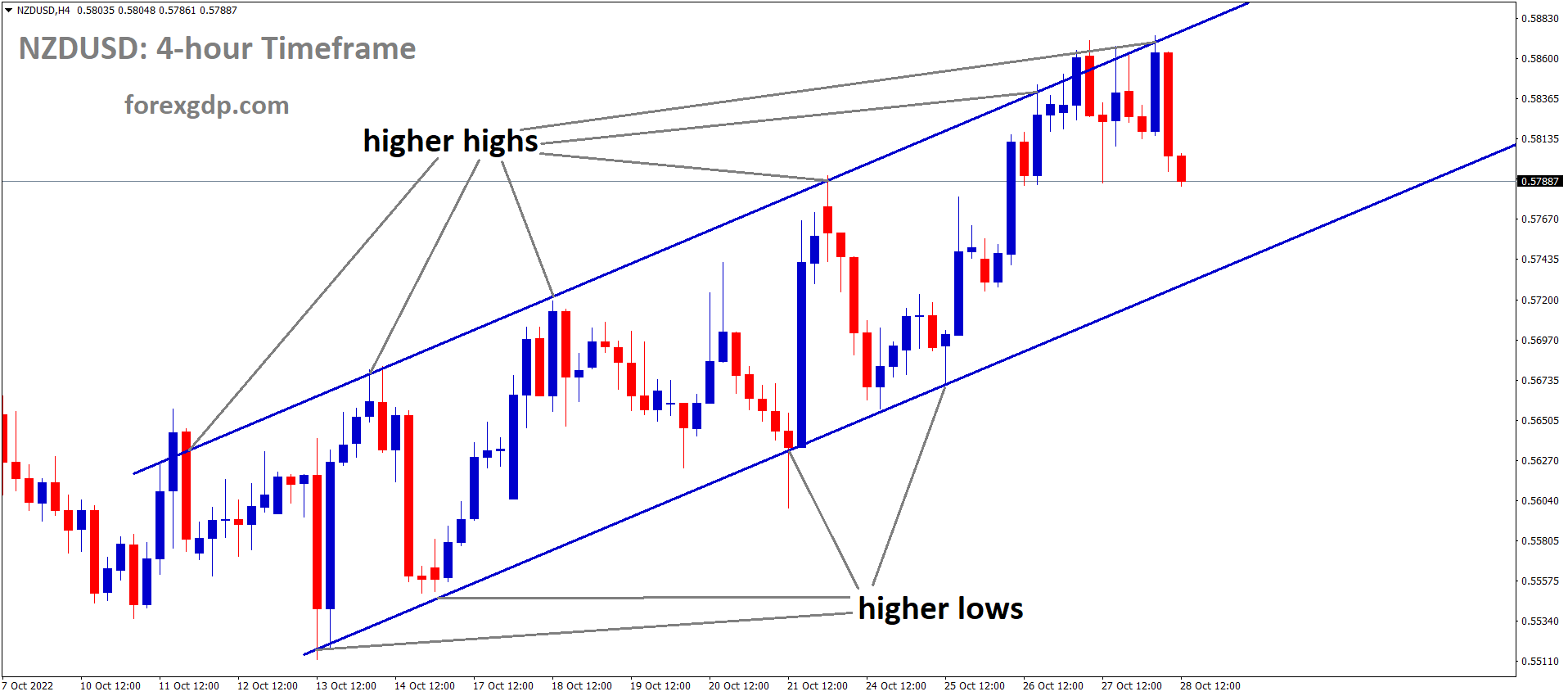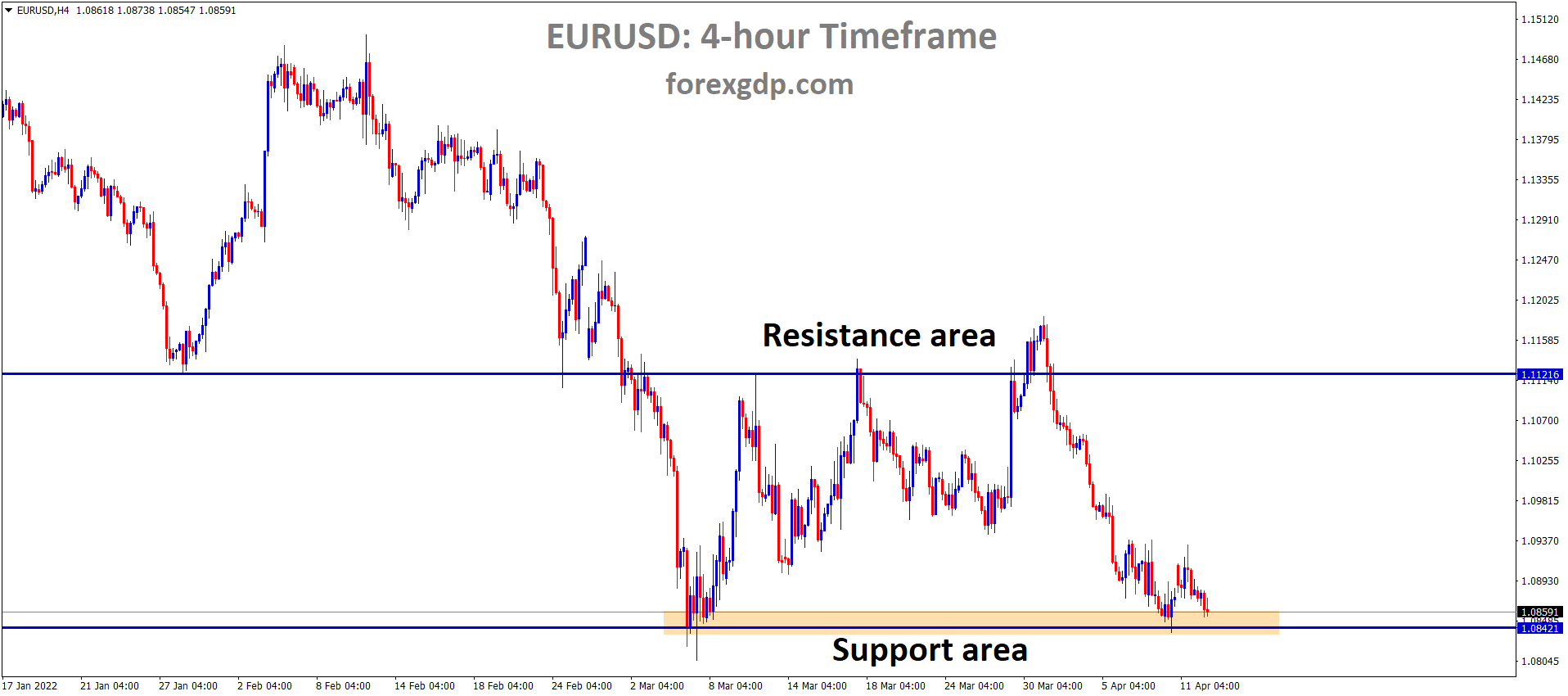USDCAD Analysis:
USDCAD is moving in the Box pattern and the market has reached the support area of the pattern
The Canadian GDP for November is projected to grow by 0.10%, compared to the previous reading of 0.0%. This anticipated growth is attributed to the support the Canadian Dollar is receiving from heightened tensions in the Middle East.
Canada’s Gross Domestic Product data for November is scheduled for release on Wednesday, with expectations of a 0.1% month-on-month expansion. However, the market’s focus will soon turn to the Federal Open Market Committee meeting. Inflation data, specifically the US Core Personal Consumption Expenditures Price Index for December, the preferred inflation metric of the Federal Reserve (Fed), showed a monthly increase of 0.2%, up from 0.1% in the previous reading. On an annual basis, it rose by 2.9%, slightly lower than the previous reading of 3.2%.

On Monday, the US Dallas Fed Manufacturing Business Index for January revealed a reading of -27.4, a decline from the -10.4 seen in the prior report. The Federal Reserve (Fed) is set to announce its interest rate decision on Wednesday. While most economists anticipate the first rate cut to occur in May or June, the possibility of a cut at the Fed’s March meeting remains on the table.
Furthermore, escalating geopolitical tensions in the Middle East may drive demand for safe-haven currencies like the US Dollar. Early Tuesday, Sky News reported that US President Joe Biden is considering authorizing US military action in the Middle East, possibly as early as Monday night. This comes after a drone strike in northeast Jordan near the Syrian border resulted in the death of three American troops and injuries to dozens more on Friday.
Regarding the Canadian Dollar (Loonie), the country is expected to see a modest expansion in its November GDP growth figures, projected to increase by 0.1% compared to the flat 0.0% recorded in October. Additionally, a rise in oil prices could provide support for the commodity-linked Loonie, potentially acting as a headwind for the USDCAD currency pair.
GOLD Analysis:
XAUUSD Gold price is moving in the Descending channel and the market has reached the lower high area of the channel
The surge in tensions in the Middle East has pushed gold prices upward. Iran has refuted allegations of a drone attack during a recent Sunday event. If the US decides to retaliate against Iran, it could provoke a reciprocal response from Iran, potentially leading to a conflict between the two nations.
The US has accused Iran-backed militias of carrying out the deadly drone strikes on American service members at a base in northeastern Jordan. President Joe Biden has promised retaliation at a time and place of our choosing. Iran, on the other hand, has denied any involvement in these drone attacks. Concerns are growing that if the US responds to these attacks, it could lead to further escalation of tensions in an already volatile Middle East.

Commodity traders are facing a busy week ahead, with both the Federal Reserve and the Bank of England making policy decisions. Additionally, at the end of the week, the latest US Jobs Report will be released. Currently, financial markets are indicating nearly a 50/50 chance of a 25 basis point interest rate cut at the upcoming March 20th Federal Open Market Committee meeting, with expectations of a total of approximately 136 basis points in cuts throughout the year.
Gold has been trapped in a narrow trading range for the past few weeks, with neither buyers nor sellers exerting significant influence on its price movement. This deadlock is likely to persist until the FOMC decision on Wednesday, unless tensions in the Middle East escalate further. The post-decision press conference is expected to be the next major catalyst for gold’s price action. Although Chair Jerome Powell is unlikely to provide a definitive timetable for rate cuts, his language during the conference may offer hints about future actions. Until then, gold is expected to remain in a sideways trading pattern.
SILVER Analysis:
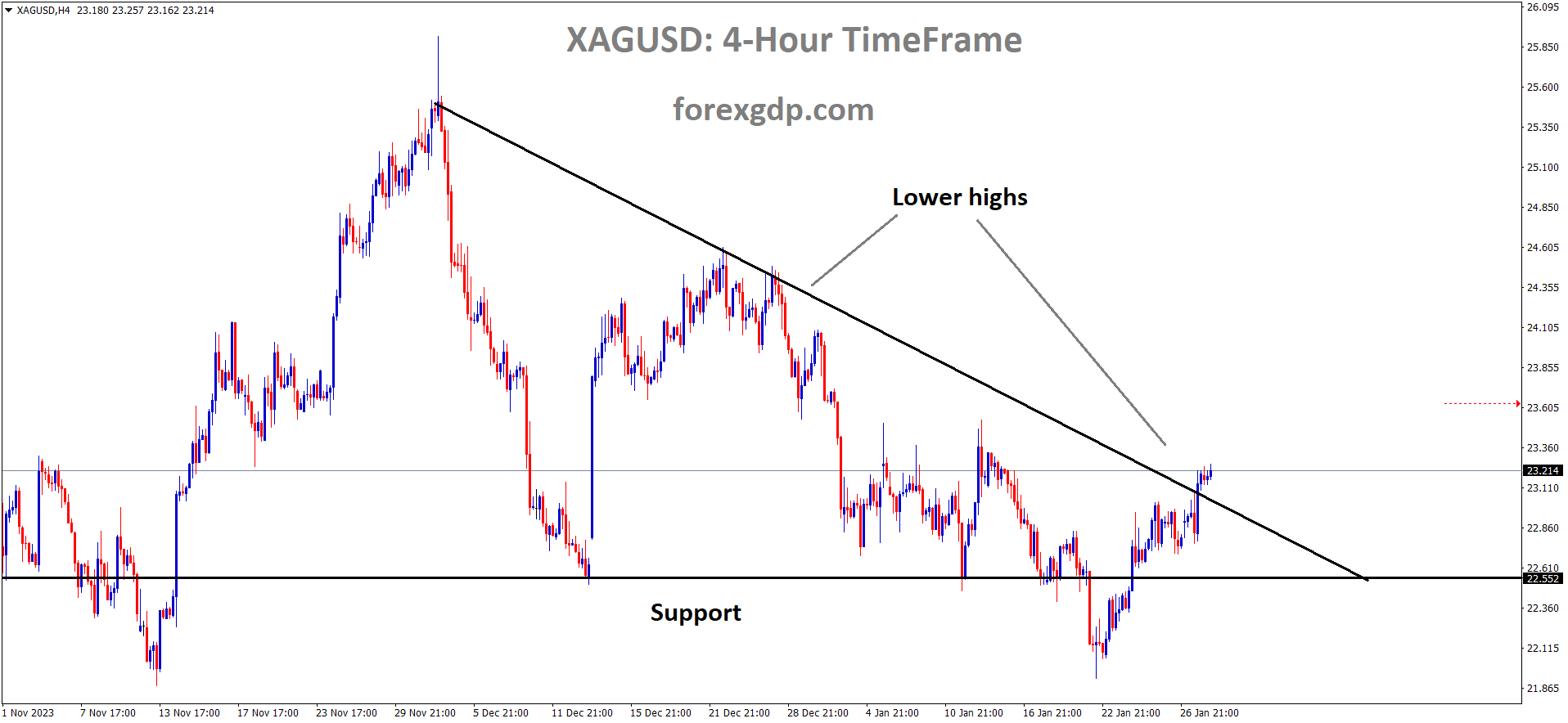
XAGUSD Silver price is moving in the Descending triangle pattern and the market has reached the lower high area of the pattern
After a drone attack resulted in the loss of three soldiers, President Joe Biden has given authorization for the deployment of US military troops to the Middle East.
According to Sky News, there is a strong likelihood that US President Joe Biden will approve military action in the Middle East as soon as Monday night. This significant decision by President Biden comes in the wake of an overnight drone attack in northeast Jordan near the Syrian border on Friday, which resulted in the tragic loss of three American troops and left many others injured.
USDCHF Analysis:
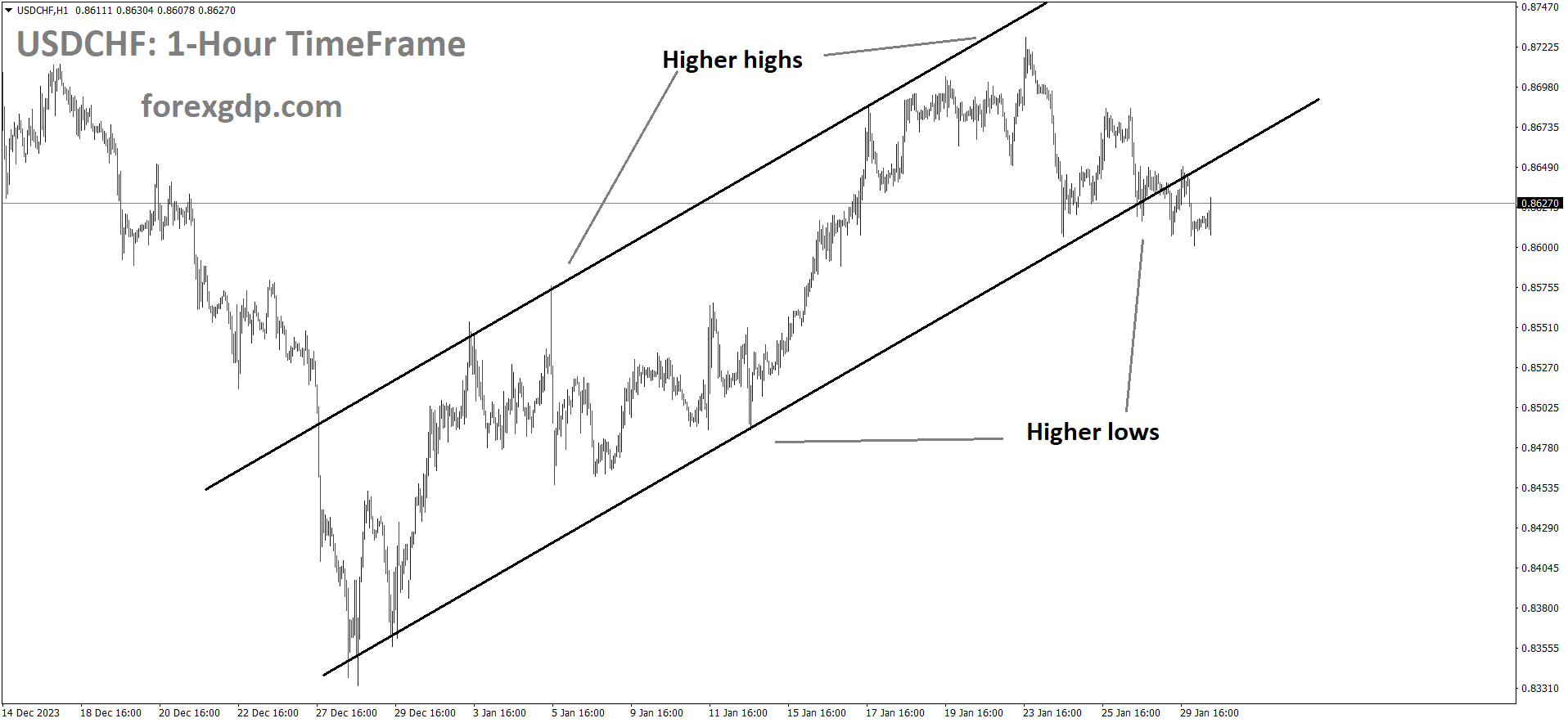
USDCHF is moving in an Ascending channel and the market has reached the higher low area of the channel
The Swiss Franc gained value relative to other currencies due to increased tensions in the Middle East. President Joe Biden has expressed strong support for US military troops following the events on Sunday. Whenever there are heightened war-related tensions, the demand for the Swiss Franc tends to rise in the market.
The Swiss Franc pair experiences a rebound as investors flock to safe-haven assets amidst heightened market volatility, driven by both the Federal Reserve’s impending monetary policy announcement and escalating tensions in the Middle East.

During the European session, S&P500 futures show muted activity, indicating that investors are adopting a cautious stance in anticipation of the Fed’s policy decision. The US Dollar Index approaches a critical resistance level at 103.70, while 10-year US Treasury yields hover around the 4.10% mark.
Market participants widely anticipate the Federal Reserve to maintain interest rates within the range of 5.25% to 5.50% for the fourth consecutive time. However, the timeline for potential rate cuts by the Fed has shifted from March to the upcoming May monetary policy meeting. This adjustment in expectations is due to policymakers’ concerns about the ramifications of prematurely reducing rates, which could potentially exacerbate underlying inflationary pressures and undermine efforts to bring them closer to the target of around 3.9%.
EURUSD Analysis:
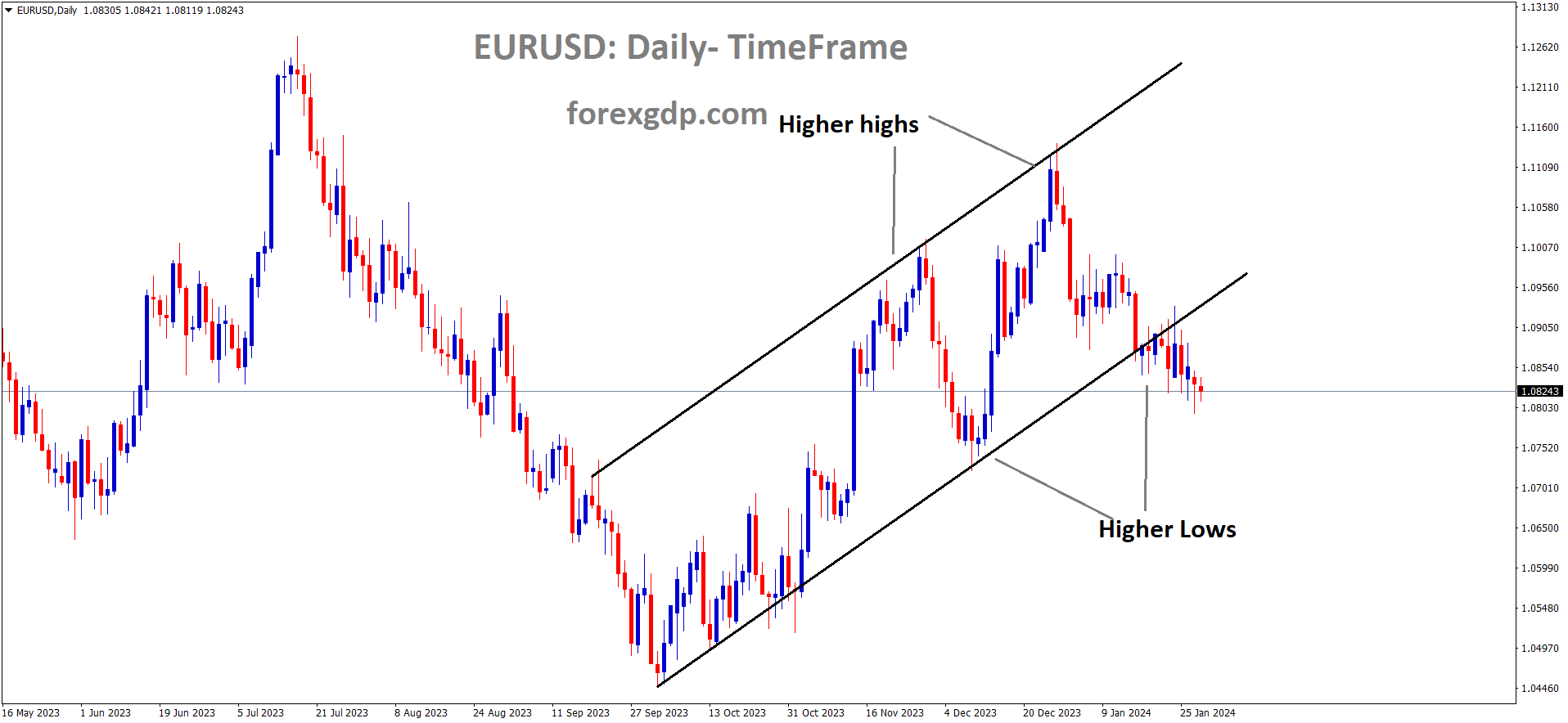
EURUSD is moving in an Ascending channel and the market has reached the higher low area of the channel
ECB Vice President Luis De Guindos clarified that rate cuts are not on the horizon, and the central bank’s primary focus in the near term is to attain the 2% inflation target. While recent inflation data has been encouraging for the ECB, there is still a path to be traversed to reach our desired goal.
The Bank of England (BoE) interest rate decision set for Thursday. Investors are closely monitoring these developments in anticipation of how the BoE’s decision might affect the EUR pair. The prevailing market consensus suggests that the Bank of England is likely to keep its current interest rate at 5.25%. BoE officials have emphasized the importance of maintaining a prolonged period of tight monetary policy to address inflation concerns, bolstering the strength of the Pound Sterling.

However, there has been a shift in market expectations regarding potential rate cuts, with the first rate reduction now entirely priced in for June. Initially expected in May, this adjustment in expectations is noteworthy and is expected to impact the trading dynamics The Euro is facing downward pressure following the European Central Bank’s decision to keep its Main Refinancing Operations Rate at 4.50% and the Deposit Facility Rate at 4.0%. Despite this decision, there is a growing anticipation in the market for ECB rate cuts, with projections indicating a potential 50 basis points (bps) reduction by June and a more substantial 140 bps cut by December 2024.
In a recent statement on Monday, ECB Vice President Luis de Guindos indicated that the ECB would consider interest rate cuts once there is confidence that inflation aligns with the central bank’s 2.0% target. He highlighted positive developments in inflation and suggested that these favorable trends would ultimately influence the ECB’s monetary policy. Looking ahead, the release of the quarterly Gross Domestic Product figures for the Eurozone and Germany is scheduled for Tuesday, adding another layer of significance to the evolving economic landscape.
EURJPY Analysis:
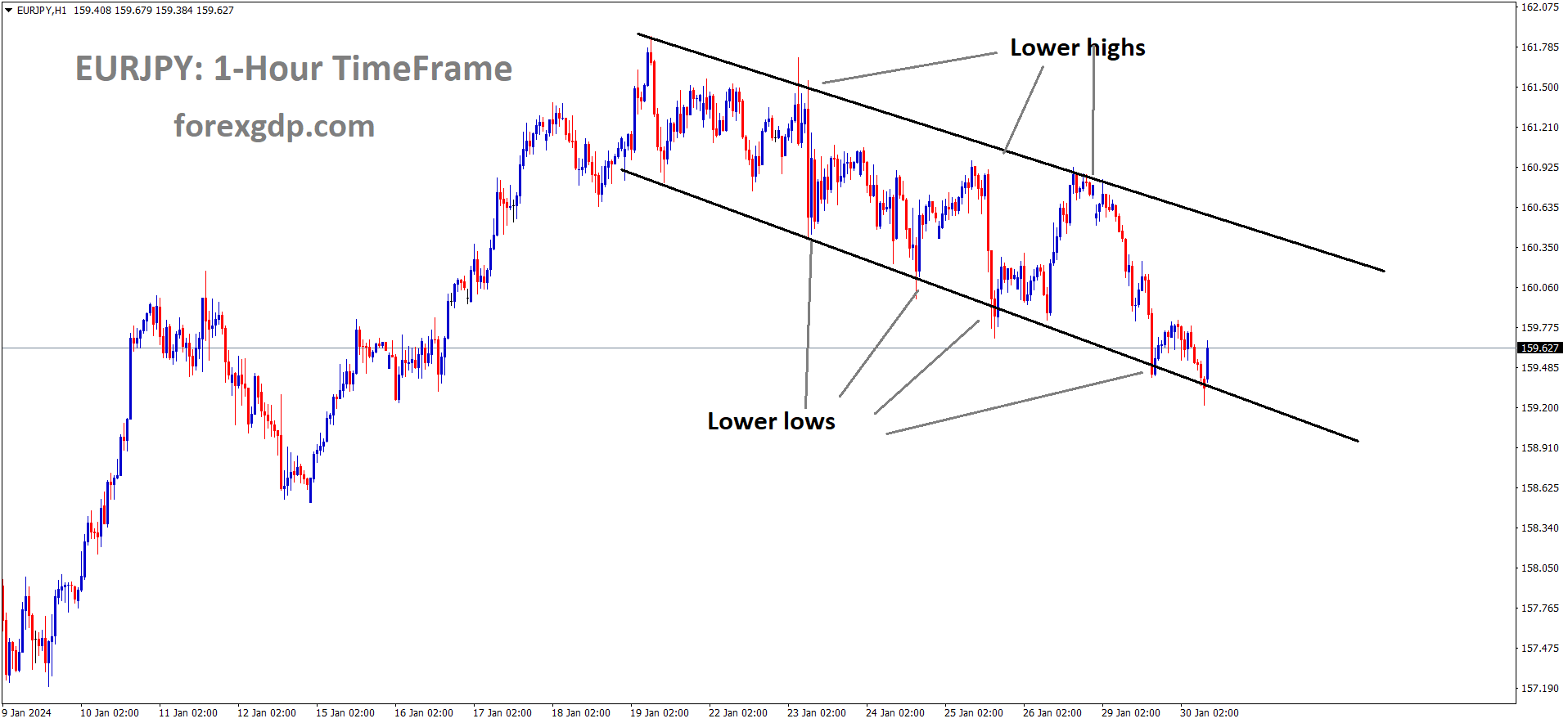
EURJPY is moving in the Descending channel and the market has rebounded from the lower low area of the channel
During a parliamentary session, Japan’s Prime Minister Kishida emphasized our priority to rejuvenate the economy before addressing wage increases for households. He highlighted that higher wage hikes are essential for restoring a healthy economic environment.

During a session in parliament on Tuesday, Prime Minister Fumio Kishida of Japan expressed his commitment to taking all necessary measures to strengthen household incomes. He emphasized that the foremost priority of his administration is to reinvigorate the economy, with a particular focus on increasing wages. Prime Minister Kishida stressed that wage hikes are of utmost importance and regarded as an urgent matter. He believes that by successfully implementing wage increases, they can foster a positive societal mindset where rising wages are considered a natural progression.
EURCHF Analysis:
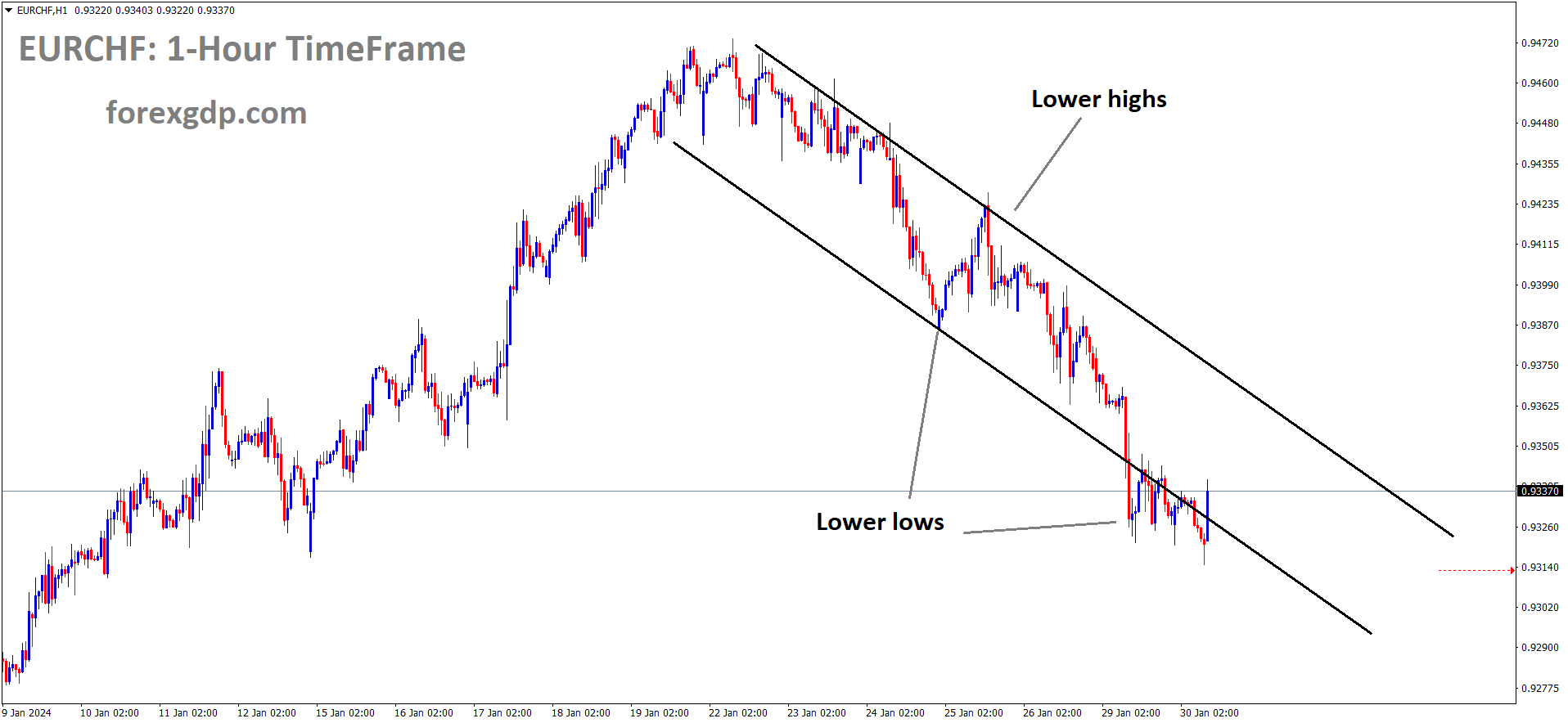
EURCHF is moving in the Descending channel and the market has reached the lower low area of the channel
Peter Kazimir, a member of the ECB Governing Council, indicated that the likelihood of rate cuts is higher in the month of June rather than in April. He emphasized that current inflation levels are not in line with the ECB’s target. He also stressed the importance of patience as a key factor in successfully achieving the desired inflation level.
Peter Kazimir, a member of the European Central Bank (ECB) Governing Council, remarked on Monday that a rate cut in June is more likely than one in April, but the precise timing is less important than the outcome of the decision.

He emphasized that the next step in monetary policy will involve a rate reduction and that it is well within their capacity. Kazimir stressed the importance of patience when making crucial decisions and noted that the ECB is not lagging behind market expectations; instead, it is the markets that are anticipating future developments. While there are positive signs regarding disinflation, they are not yet sufficient to draw a confident conclusion.
GBPUSD Analysis:
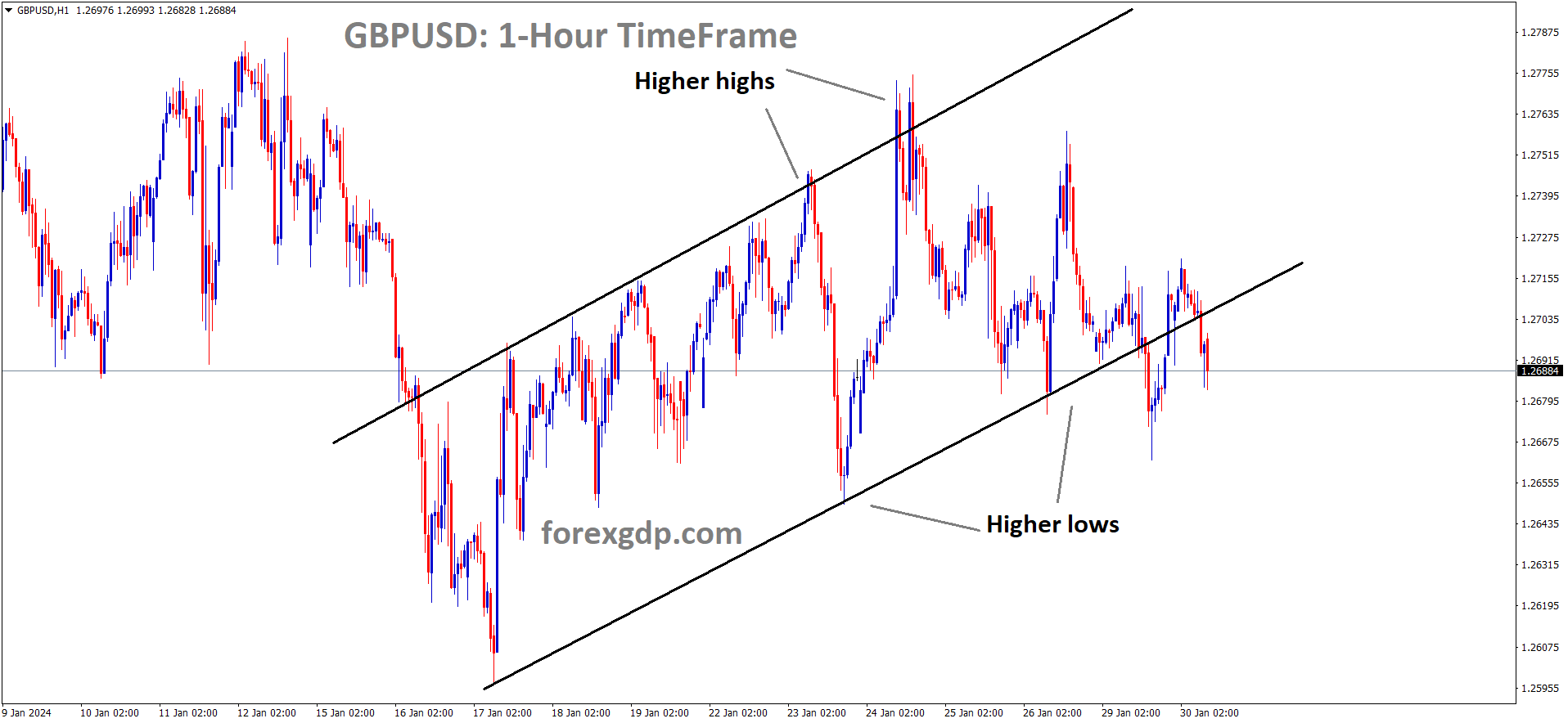
GBPUSD is moving in an Ascending channel and the market has reached the higher low area of the channel
In anticipation of the upcoming Bank of England (BoE) Monetary Policy meeting this week, the GBP is showing some weakness against its counterparts. This is attributed to the market’s expectation of a steady interest rate decision at the upcoming meeting.
The Pound Sterling is trading within a narrow range as investors adopt a cautious stance ahead of an eventful week. The GBPUSD pair is struggling to find a clear direction in anticipation of interest rate decisions from both the Bank of England (BoE) and the Federal Reserve. These central banks are widely expected to maintain their current interest rates for the fourth consecutive time.
While the BoE is expected to keep rates steady, the key focus will be on the guidance provided regarding future interest rate policies. The BoE is facing a delicate balancing act, weighing the challenges posed by a fragile domestic and global economy against persistent inflationary pressures. If the BoE signals a commitment to keeping interest rates elevated for an extended period, it could potentially dampen labor market conditions and demand. Conversely, a more dovish stance could exacerbate inflationary pressures.
The market sentiment is cautious, influenced by Middle East tensions and the impending monetary policy announcements from the Federal Reserve. Investors are closely monitoring whether the Fed will opt for a rate cut in either the March or May meetings, following an extended period of rate hikes. As a result, the Pound Sterling remains range-bound as market participants await the outcomes of the Federal Reserve and Bank of England meetings scheduled for Wednesday and Thursday, respectively.
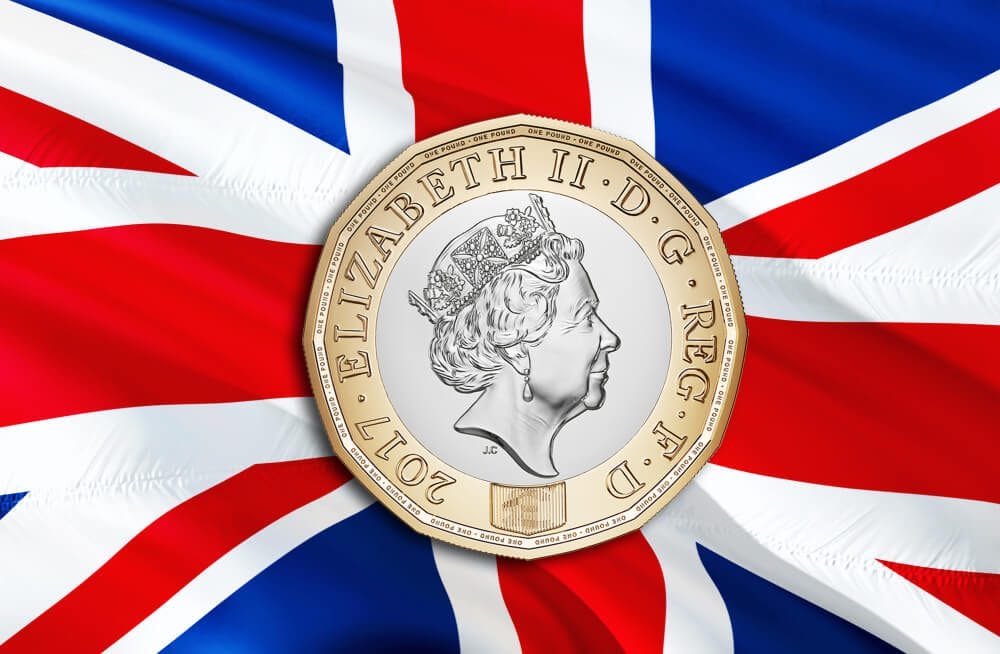
The decision-making process for BoE policymakers is complex, given the UK’s high inflation and fragile economic outlook. The UK economy experienced a 0.1% contraction in the third quarter of 2023 due to reduced business activity caused by weak demand. A similar performance is anticipated in the fourth quarter of 2023, as businesses refrained from utilizing their full capacity and making new investment decisions to avoid higher interest costs. If the UK economy contracts again in the fourth quarter of 2023, it would technically be in a recession.
BoE policymakers consider both core and service inflation when determining interest rates, which currently stand at 5.1% and 6.4%, significantly exceeding the central bank’s target. This leaves little room for a dovish decision, at least for the time being. On Thursday, the BoE is widely expected to maintain interest rates at the current level of 5.25% for the fourth consecutive time. It will be interesting to see whether the BoE provides a more dovish guidance due to weakening demand conditions or continues to lean towards a restrictive monetary policy.
Meanwhile, the market remains subdued as investors grapple with Middle East tensions. The US Dollar Index has seen a slight increase, approaching 103.50 from Monday’s close, but is expected to remain lackluster as investors await the outcome of the Fed policy meeting. Like the BoE, the Federal Reserve is also expected to keep interest rates within the 5.25-5.50% range for the fourth consecutive time. Market participants are increasingly confident that the Fed will begin reducing interest rates from May, as inflationary pressures ease. Today’s session will feature a focus on the US JOLTS Job Openings data.
AUDUSD Analysis:
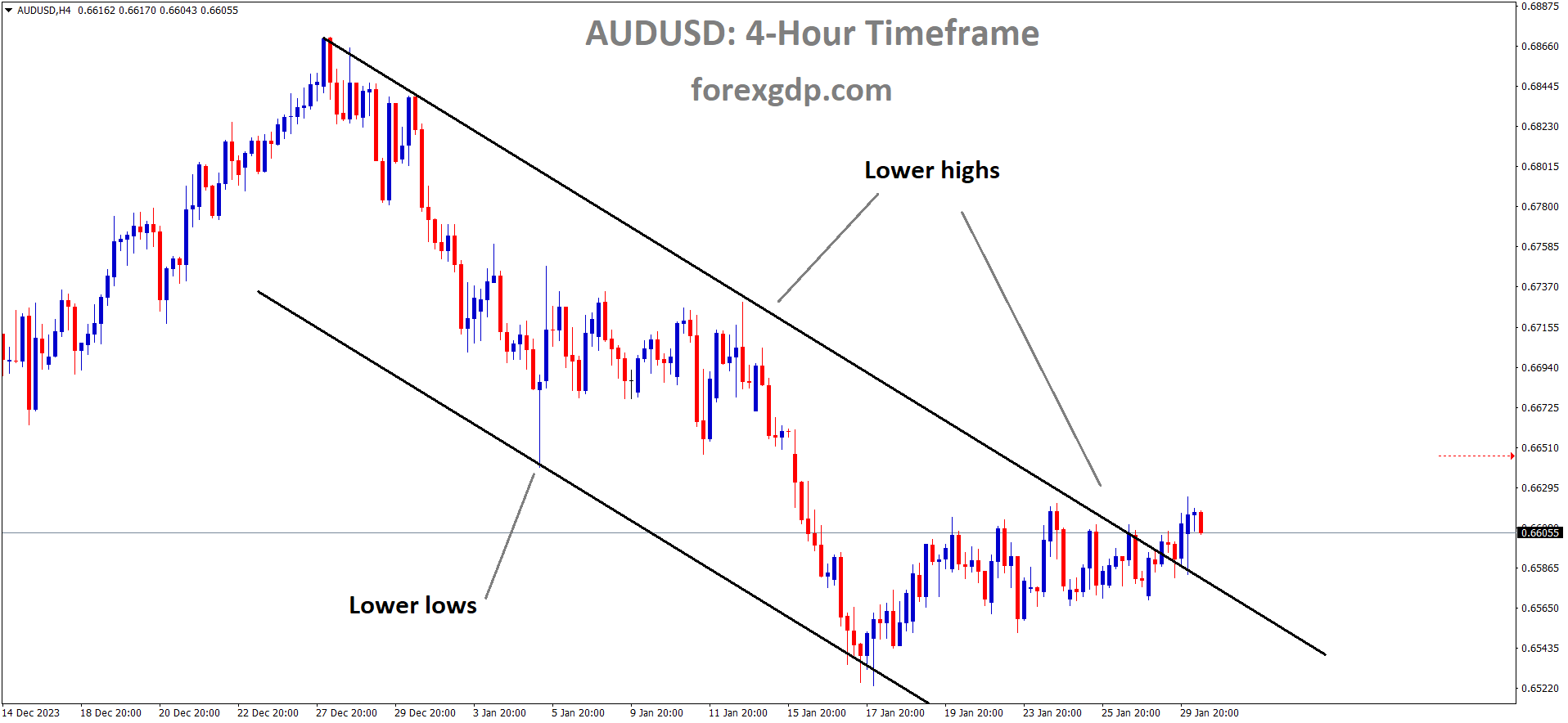
AUDUSD is moving in the Descending channel and the market has reached the lower high area of the channel
In December, Australian retail sales experienced a 2.9% decline, a reversal from the 2.0% increase seen in the previous month. Surprisingly, despite this downturn, the Australian Dollar remained relatively stable against the US Dollar, largely influenced by China’s economic stimulus measures.
The AUDUSD pair found support in the form of lower United States bond yields in the previous session, a trend attributed to the improved health of the US balance sheet. Since October 2023, the decline in yields has contributed to the sustainability of the US Treasury, while stronger economic growth has resulted in higher tax receipts. The US Treasury Department has recently announced plans to borrow $760 billion in the first quarter, which is lower than the previous estimate of $816 billion made in October.
On Tuesday, Australia’s Bureau of Statistics released the seasonally adjusted Retail Sales data for December, revealing a surprising decline of 2.7%. This figure contrasted with the expected decrease of 0.9% and marked a significant reversal from the previous 2.0% growth. Interestingly, the Aussie Dollar strengthened despite the disappointing consumer spending data, possibly due to positive sentiments arising from news of additional stimulus measures in China, which provided support to the AUDUSD pair. Additionally, investors will be closely watching the Australian Consumer Price Index data scheduled for release on Wednesday, which is anticipated to show a decline of 0.8% in the fourth quarter, down from the previous 1.2%.
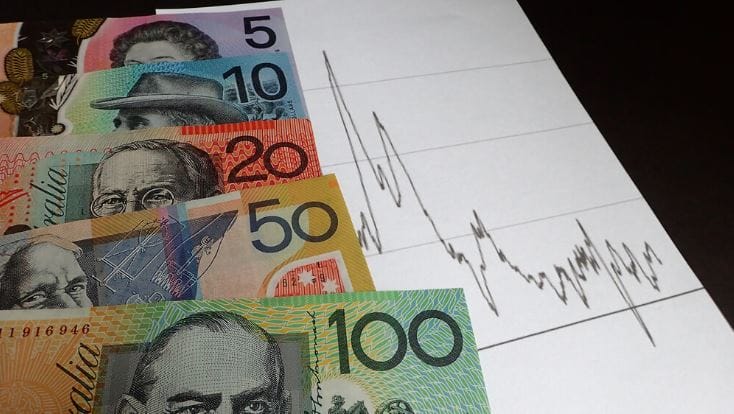
The US Dollar Index has stabilized after Monday’s losses, attributed to an improved risk-off sentiment. This risk aversion sentiment could intensify as the administration of US President Joe Biden is expected to authorize military strikes in response to the recent drone attack on a US outpost in Jordan, resulting in the death of three US troops and injuries to at least 24. Investors will pay close attention to the Federal Open Market Committee (FOMC) statement scheduled for Wednesday, January 31. The consensus expectation is for the Fed Funds rate to remain unchanged at 5.25-5.50%. However, the prevailing market bias toward a potential rate cut in March may exert downward pressure on the US Dollar (USD). In the lead-up to the FOMC statement, Tuesday’s releases of the Housing Price Index and Consumer Confidence figures will be closely monitored for further market insights.
Australia’s Manufacturing PMI has shown improvement, rising from 47.6 to 50.3. Services PMI also saw an uptick, increasing from 47.1 to 47.9. The Composite PMI registered a rise, reaching 48.1 compared to December’s 46.9. The Reserve Bank of Australia’s Bulletin has indicated that businesses generally expect a moderation in their price growth over the past six months, with prices expected to remain above the RBA’s inflation target range of 2.0–3.0%. Chinese financial media reported that the People’s Bank of China may cut the Medium-term Lending Facility rate in the current quarter. This announcement follows the recent statement by PBoC Governor Pan Gongsheng, revealing a 50 basis point reduction in the Required Reserve Ratio (RRR) starting from February 5th.
The US Core Personal Consumption Expenditures Price Index for December showed a monthly increase of 0.2%, in line with expectations, compared to the previous reading of 0.1%. The annual Core PCE rose by 2.9%, falling short of the expected 3.0% and the previous reading of 3.2%. Lastly, the US Gross Domestic Product Annualized (Q4) reported a reading of 3.3%, surpassing the market consensus of 2.0% and exceeding the previous reading of 4.9%.
NZDUSD Analysis:
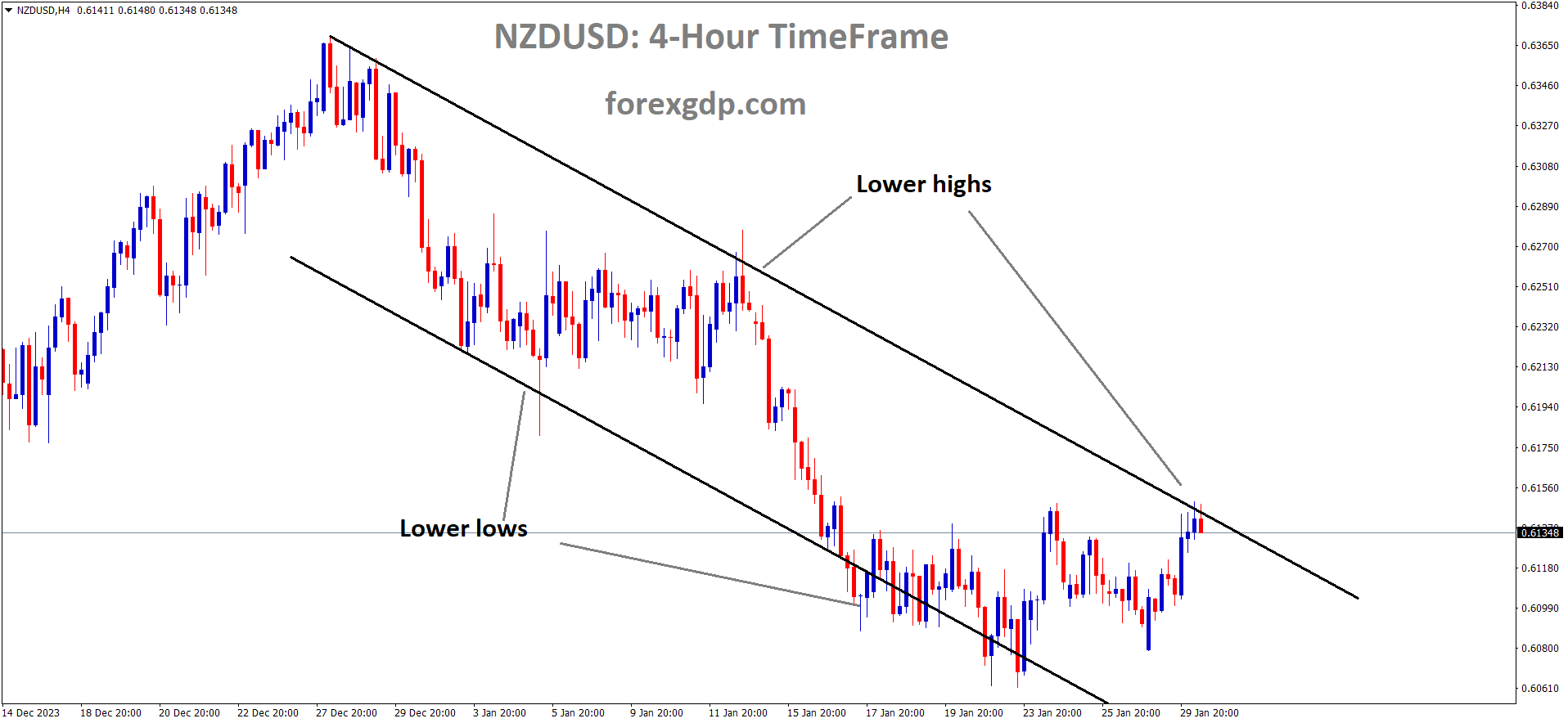
NZDUSD is moving in the Descending channel and the market has reached the lower high area of the channel
According to the Chief Economist of the Reserve Bank of New Zealand (RBNZ), Paul Conway, the current GDP and inflation figures do not necessarily indicate an actual slowdown in economic growth. Following the rate hikes, both consumption and production have declined, but it is clear that there is still a considerable distance to cover before a rate cut scenario becomes a possibility.

Reserve Bank of New Zealand Chief Economist Paul Conway stated on Tuesday that the downward revisions to economic activity data should not be interpreted as reduced inflationary pressure within the economy. While a lower GDP figure indicates weakened demand, it also suggests that the economy’s productive capacity is not as high as previously estimated. In other words, the recent GDP revisions do not necessarily indicate that the capacity-related pressures in the economy are significantly lower than previously assumed.
In summary, monetary policy is proving effective in a context where the economy is slowing down and inflation is decreasing. However, there is still a considerable distance to cover in order to bring inflation back to the central target of 2%. I want to emphasize my cautious approach here, and I won’t provide any hints about the future direction of the Official Cash Rate.
Don’t trade all the time, trade forex only at the confirmed trade setups.
Get more confirmed trade setups here: forexgdp.com/buy/

